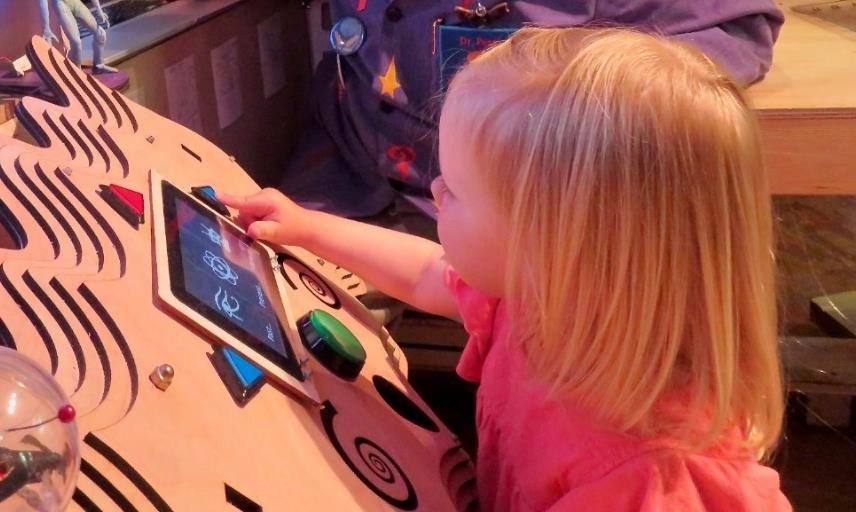57 Information Processing
Information processing researchers have focused on several issues in cognitive development for this age group, including improvements in attention skills, changes in the capacity, and the emergence of executive functions in working memory. Additionally, in early childhood memory strategies, memory accuracy, and autobiographical memory emerge. Early childhood is seen by many researchers as a crucial time period in memory development (Posner & Rothbart, 2007).

Attention
Changes in attention have been described by many as the key to changes in human memory (Nelson & Fivush, 2004; Posner & Rothbart, 2007). However, attention is not a unified function; it is comprised of sub-processes. The ability to switch our focus between tasks or external stimuli is called divided attention or multitasking. This is separate from our ability to focus on a single task or stimulus, while ignoring distracting information, called selective attention. Different from these is sustained attention, or the ability to stay on task for long periods of time. Moreover, we also have attention processes that influence our behavior and enable us to inhibit a habitual or dominant response, and others that enable us to distract ourselves when upset or frustrated.
Divided Attention
Young children (age 3-4) have considerable difficulties in dividing their attention between two tasks, and often perform at levels equivalent to our closest relative, the chimpanzee, but by age five they have surpassed the chimp (Hermann, Misch, Hernandez-Lloreda & Tomasello, 2015; Hermann & Tomasello, 2015). Despite these improvements, 5-year-olds continue to perform below the level of school-age children, adolescents, and adults.
Selective Attention
Children’s ability with selective attention tasks improve as they age. However, this ability is also greatly influenced by the child’s temperament (Rothbart & Rueda, 2005), the complexity of the stimulus or task (Porporino, Shore, Iarocci & Burack, 2004), and along with whether the stimuli are visual or auditory (Guy, Rogers & Cornish, 2013). Guy et al. (2013) found that children’s ability to selectively attend to visual information outpaced that of auditory stimuli. This may explain why young children are not able to hear the voice of the teacher over the cacophony of sounds in the typical preschool classroom (Jones, Moore & Amitay, 2015). Jones and his colleagues found that 4 to 7 year-olds could not filter out background noise, especially when its frequencies were close in sound to the target sound. In comparison, 8- to 11-year-old children often performed similar to adults.

Sustained Attention
Most measures of sustained attention typically ask children to spend several minutes focusing on one task, while waiting for an infrequent event, while there are multiple distractors for several minutes. Berwid, Curko-Kera, Marks & Halperin (2005) asked children between the ages of 3 and 7 to push a button whenever a “target” image was displayed, but they had to refrain from pushing the button when a non-target image was shown. The younger the child, the more difficulty he or she had maintaining their attention.

Memory
Based on studies of adults, people with amnesia, and neurological research on memory,
researchers have proposed several “types” of memory (see Figure 4.14). Sensory memory (also called the sensory register) is the first stage of the memory system, and it stores sensory input in its raw form for a very brief duration; essentially long enough for the brain to register and start processing the information. Studies of auditory sensory memory show that it lasts about one second in 2 year-olds, two seconds in 3-year-olds, more than two seconds in 4-year-olds, and three to five seconds in 6-year-olds (Glass, Sachse, & von Suchodoletz, 2008). Other researchers have also found that young children hold sounds for a shorter duration than do older children and adults, and that this deficit is not due to attentional differences between these age groups, but reflects differences in the performance of the sensory memory system (Gomes et al., 1999). The second stage of the memory system is called short-term or working memory. Working memory is the component of memory in which current conscious mental activity occurs.
Working memory often requires conscious effort and adequate use of attention to function effectively. As you read earlier, children in this age group struggle with many aspects of attention and this greatly diminishes their ability to consciously juggle several pieces of information in memory. The capacity of working memory, that is the amount of information someone can hold in consciousness, is smaller in young children than in older children and adults. The typical adult and teenager can hold a 7 digit number active in their short-term memory. The typical 5-year-old can hold only a 4 digit number active. This means that the more complex a mental task is, the less efficient a younger child will be in paying attention to, and actively processing, information in order to complete the task.

Changes in attention and the working memory system also involve changes in executive function. Executive function (EF) refers to self-regulatory processes, such as the ability to inhibit a behavior or cognitive flexibility, that enable adaptive responses to new situations or to reach a specific goal. Executive function skills gradually emerge during early childhood and continue to develop throughout childhood and adolescence. Like many cognitive changes, brain maturation, especially the prefrontal cortex, along with experience influence the development of executive function skills.
Video describes executive function and why these skills are so foundational for children’s development.
A child shows higher executive functioning skills when the parents are more warm and responsive, use scaffolding when the child is trying to solve a problem, and provide cognitively stimulating environments for the child (Fay-Stammbach, Hawes & Meredith, 2014). For instance, scaffolding was positively correlated with greater cognitive flexibility at age two and inhibitory control at age four (Bibok, Carpendale & Müller, 2009). In Schneider, Kron-Sperl and Hunnerkopf’s (2009) longitudinal study of 102 kindergarten children, the majority of children used no strategy to remember information, a finding that was consistent with previous research. As a result, their memory performance was poor when compared to their abilities as they aged and started to use more effective memory strategies.
The third component in memory is long-term memory, which is also known as permanent memory. A basic division of long-term memory is between declarative and non-declarative memory.
- Declarative memories, sometimes referred to as explicit memories, are memories for facts or events that we can consciously recollect. Declarative memory is further divided into semantic and episodic memory.
- Semantic memories are memories for facts and knowledge that are not tied to a timeline,
- Episodic memories are tied to specific events in time.
- Non- declarative memories, sometimes referred to as implicit memories, are typically automated skills that do not require conscious recollection.
Autobiographical memory is our personal narrative. Adults rarely remember events from the first few years of life. In other words, we lack autobiographical memories from our experiences as an infant, toddler and very young preschooler. Several factors contribute to the emergence of autobiographical memory including brain maturation, improvements in language, opportunities to talk about experiences with parents and others, the development of theory of mind, and a representation of “self” (Nelson & Fivush, 2004). Two-year-olds do remember fragments of personal experiences, but these are rarely coherent accounts of past events
(Nelson & Ross, 1980). Between 2 and 2 1⁄2 years of age children can provide more information about past experiences. However, these recollections require considerable prodding by adults (Nelson & Fivush, 2004). Over the next few years children will form more detailed autobiographical memories and engage in more reflection of the past.
Neo-Piagetians
As previously discussed, Piaget’s theory has been criticized on many fronts, and updates to reflect more current research have been provided by the Neo-Piagetians, or those theorists who provide “new” interpretations of Piaget’s theory. Morra, Gobbo, Marini and Sheese (2008) reviewed Neo-Piagetian theories, which were first presented in the 1970s, and identified how these “new” theories combined Piagetian concepts with those found in Information Processing. Similar to Piaget’s theory, Neo-Piagetian theories believe in constructivism, assume cognitive development can be separated into different stages with qualitatively different characteristics, and advocate that children’s thinking becomes more complex in advanced stages. Unlike Piaget, Neo-Piagetians believe that aspects of information processing change the complexity of each stage, not logic as determined by Piaget.
Neo-Piagetians propose that working memory capacity is affected by biological maturation, and therefore restricts young children’s ability to acquire complex thinking and reasoning skills.
Increases in working memory performance and cognitive skills development coincide with the timing of several neurodevelopmental processes. These include myelination, axonal and synaptic pruning, changes in cerebral metabolism, and changes in brain activity (Morra et al., 2008).
Myelination especially occurs in waves between birth and adolescence, and the degree of myelination in particular areas explains the increasing efficiency of certain skills. Therefore, brain maturation, which occurs in spurts, affects how and when cognitive skills develop.
Additionally, all Neo-Piagetian theories support that experience and learning interact with biological maturation in shaping cognitive development.[1]
In this video, Dr. Boise briefly discusses information processing models, types of attention, and theory-theory.
- Lifespan Development: A Psychological Perspective by Martha Lally and Suzanne Valentine-French is licensed under CC BY-NC-SA 3.0 ↵

